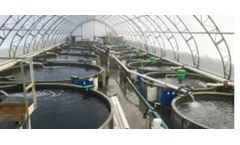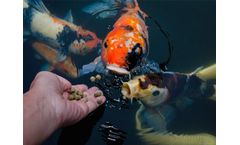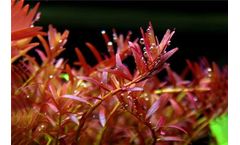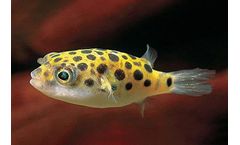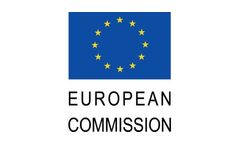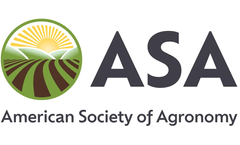Refine by
Aquatic Species Articles & Analysis
22 articles found
However, fish farming comes with its challenges, one of which is maintaining optimal water quality to ensure the health and growth of aquatic species. This is where ozone technology, specifically Absolute Ozone® generators, is making a remarkable impact. ...
There are two types of aquatic food pellets commonly sold for farming fish or other aquatic species. ...
Therefore, it is a significant risk that resistant bacteria can transfer from aquatic species to humans. Probiotics provide a promising solution to this problem. ...
However, it is known to raise the pH quickly and dramatically above tolerable levels for most aquatic organisms. The carbonate component raises the alkalinity and the pH of the water while the calcium and magnesium components raise the hardness of water, essential to the health of many aquatic species. ...
ByFishward
We believe the future of aquaculture nutrition, disease management, and environmental treatment is biological. At QB Labs, we’re constantly looking at the effects of various microorganisms to replace antibiotics, augment natural fish/shrimp biological processes, and improve environmental impacts of commercial aquaculture. While educating customers on our products, we’re often asked ...
Even though it is not immediately blocked, if too many aquatic debris rots in the dark and dull filter cartridge, it will also pollute the water quality. ...
Riccia fluitans and Glossostigma elatinoides are the two most common varieties in the aquatic plant world, and they are the species that people prefer more when they choose to plant water grass.When breeding such kinds of aquatic plant species, in addition to scientific and reasonable care, but also regular trimming. ...
Growth inhibitor, allergens and other anti-nutritional factors largely inactivated during extrusion cooking. Manufacturing Soft Aquatic Pellets Some species like blue fin tuna prefer very soft pellet. ...
The Regulation on the use of alien and locally absent species in aquaculture9 addresses the movement of alien species for aquaculture purposes. Operators must conduct prior risk assessments and obtain permits to transfer alien aquatic species. The newly adopted EU Regulation on the prevention and management of the introduction ...
A study was performed to investigate the toxicity of fluoride to a variety of freshwater aquatic organisms and to establish whether water quality variables contribute substantively to modifying its toxicity. ...
The zebra mussel, a non-indigenous species in North American freshwater ecosystems, has received significant attention over the past two decades as a costly and damaging invader. In the USA, federal-, state-, and local-level policies designed to control and/or prevent the spread of this species remain flawed, in that they do not everywhere account for (or ...
Due to the conservation of acetylcholinesterase between invertebrates and vertebrates, OPs can also adversely affect non‐target species, such as aquatic and terrestrial animals. This study used uniform conditions to analyze the morphological and physiological effects caused by developmental exposure to three commonly used OPs, chlorpyrifos, dichlorvos, and ...
Species sensitivity distributions (SSD) are cumulative distribution functions of species toxicity values. The SSD approach is increasingly being used in ecological risk assessment, but is often limited by available toxicity data necessary for diverse species representation. In this study we evaluate augmenting aquatic ...
Unpredicted variation in levels of risk to organisms to xenobiotics can be observed, despite the use model species to predict the effects of chemicals in the environment. Physiological and morphological differences between species and life stages may lead to differences in sensitivity, while seasonal and spatial variation in pesticide concentrations may affect ...
Although not routinely monitored in the environment, SPL has been detected downstream of a pharmaceutical manufacturer, indicating a potential for exposure of aquatic species. Further, SPL has been reported to cause masculinization of female western mosquitofish, a response indicative of AR activation. ...
At a Society of Environmental Toxicology and Chemistry (SETAC) workshop on Aquatic Macrophyte Risk Assessment for Pesticides (AMRAP), a Species Sensitivity Distribution (SSD) working group was formed to address uncertainties about the sensitivity of Lemna spp. relative to other aquatic macrophyte species. ...
In ecotoxicology, appreciation is growing for the influence that ecological interactions have on the toxicity of contaminants, such as insecticides, to sensitive species. Most previous studies, however, have focused on factors that exacerbate insecticide effects on species, while factors that may mitigate these effects have been relatively ignored. In ...
Conflict between native amphibians and aquatic weed management in the Pacific Northwest is rarely recognized because most native stillwater‐breeding amphibian species move upland during summer, when herbicide application to control weeds in aquatic habitats typically occurs. However, aquatic weed management may pose a risk for ...
In the present study, we evaluated acute phototoxicity of nano‐TiO2 under simulated solar radiation (SSR) to two aquatic species–Daphnia magna and Japanese Medaka, using 48‐h and 96‐h assays, respectively. ...
Past studies have shown that animal manure may contain estrogens, which are classified as endocrine-disrupting chemicals and may pose a threat to aquatic and wildlife species. We evaluated the concentrations of estrogens in surface runoff from experimental plots (5 × 12 m each) receiving raw and pelletized poultry litter. ...

